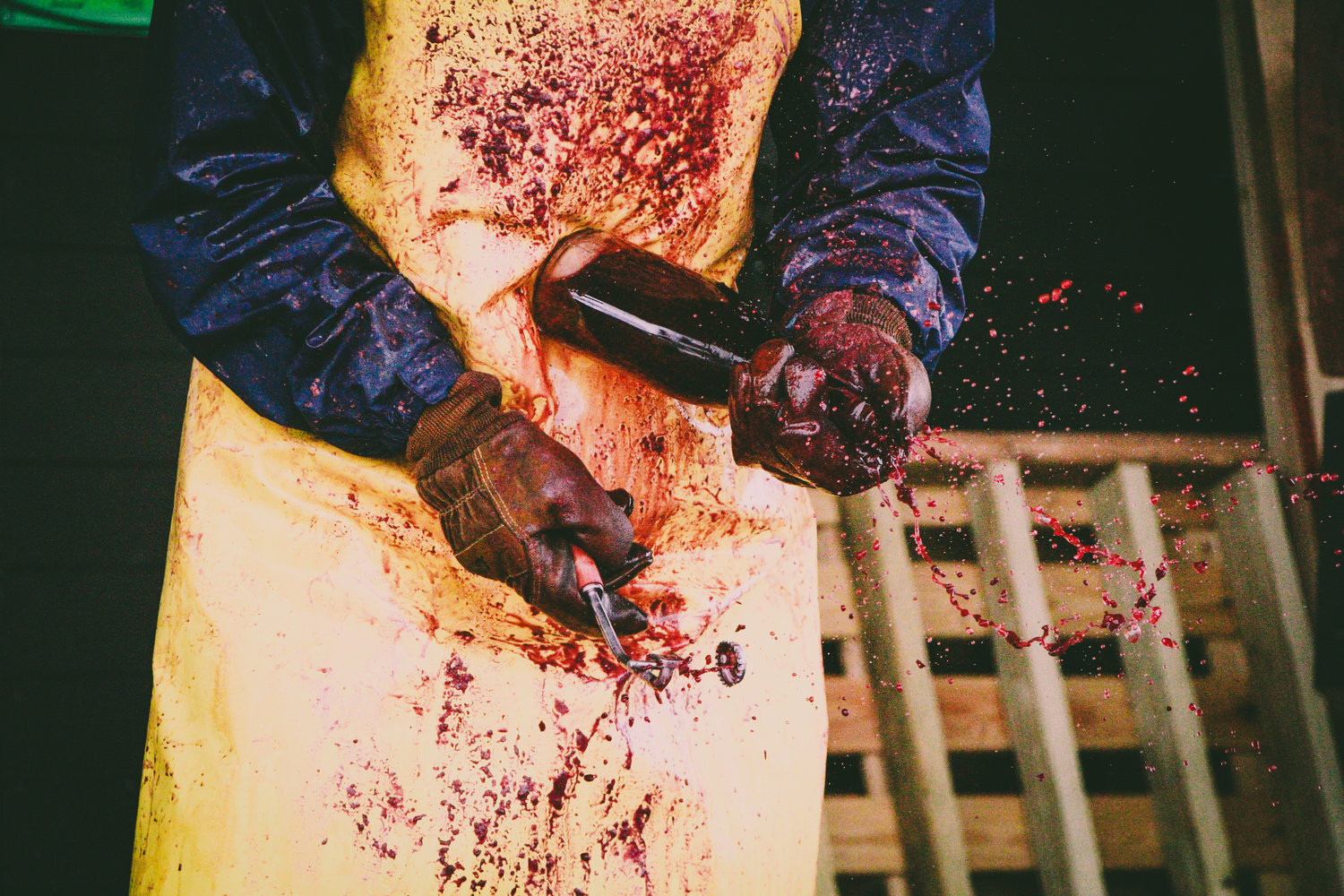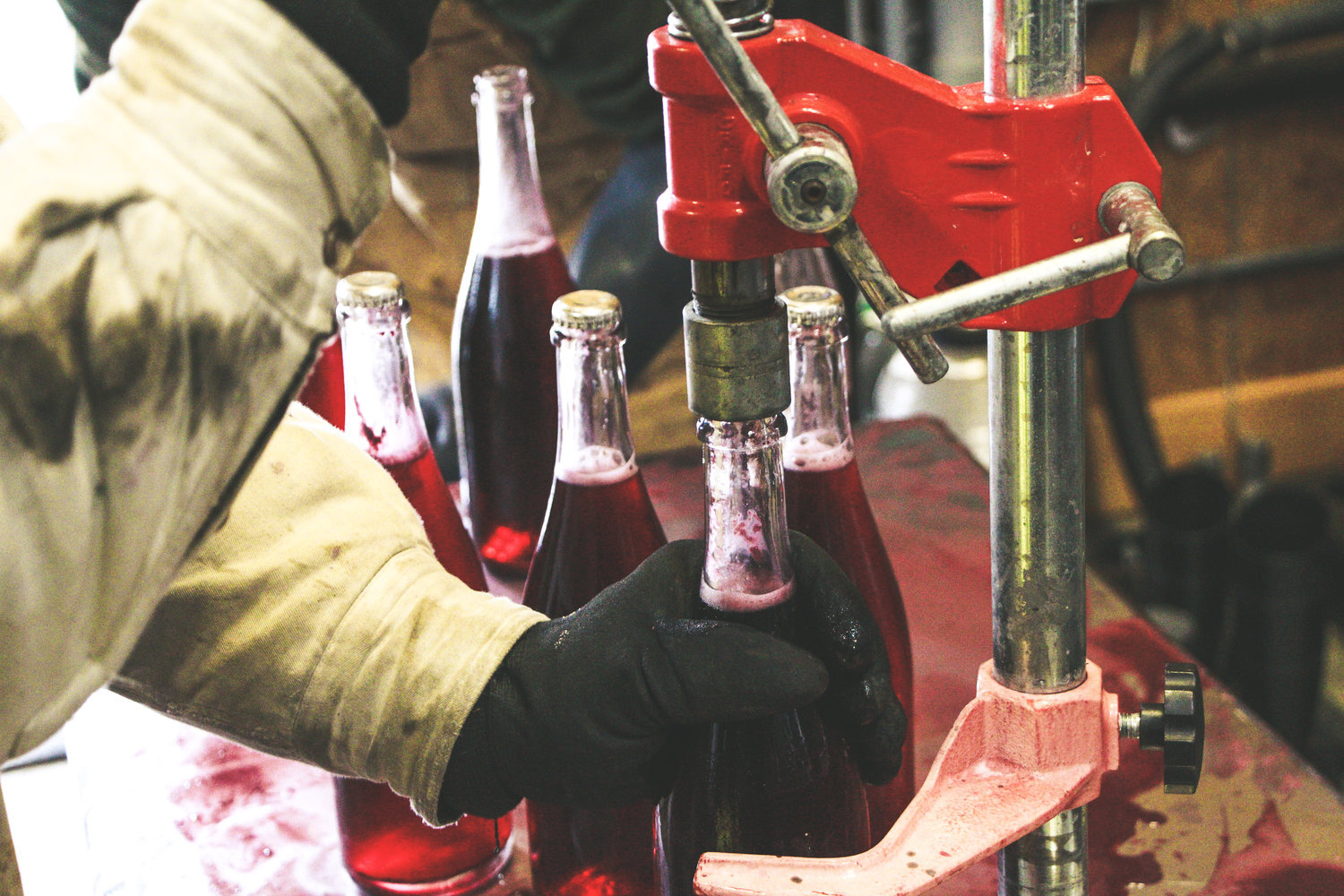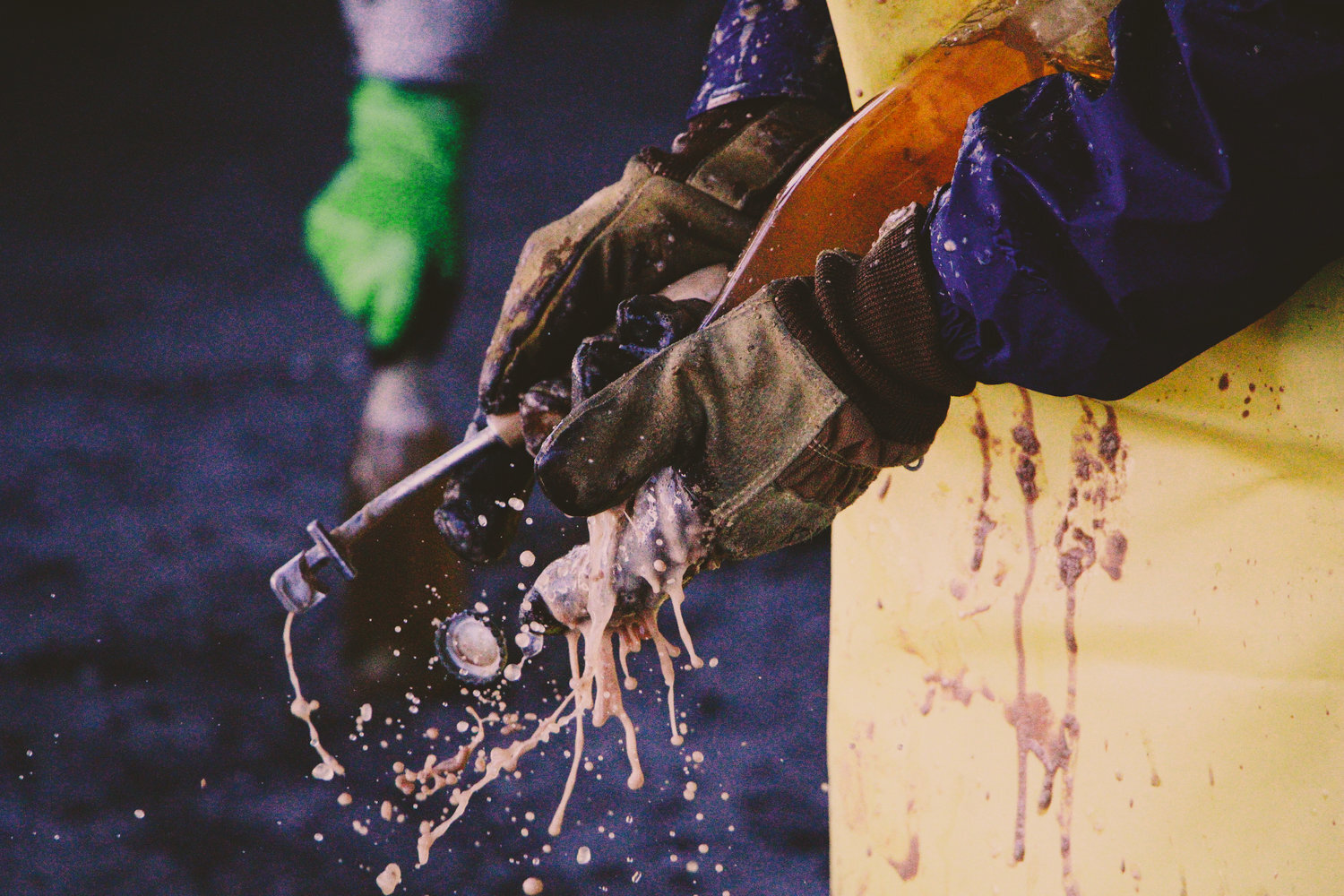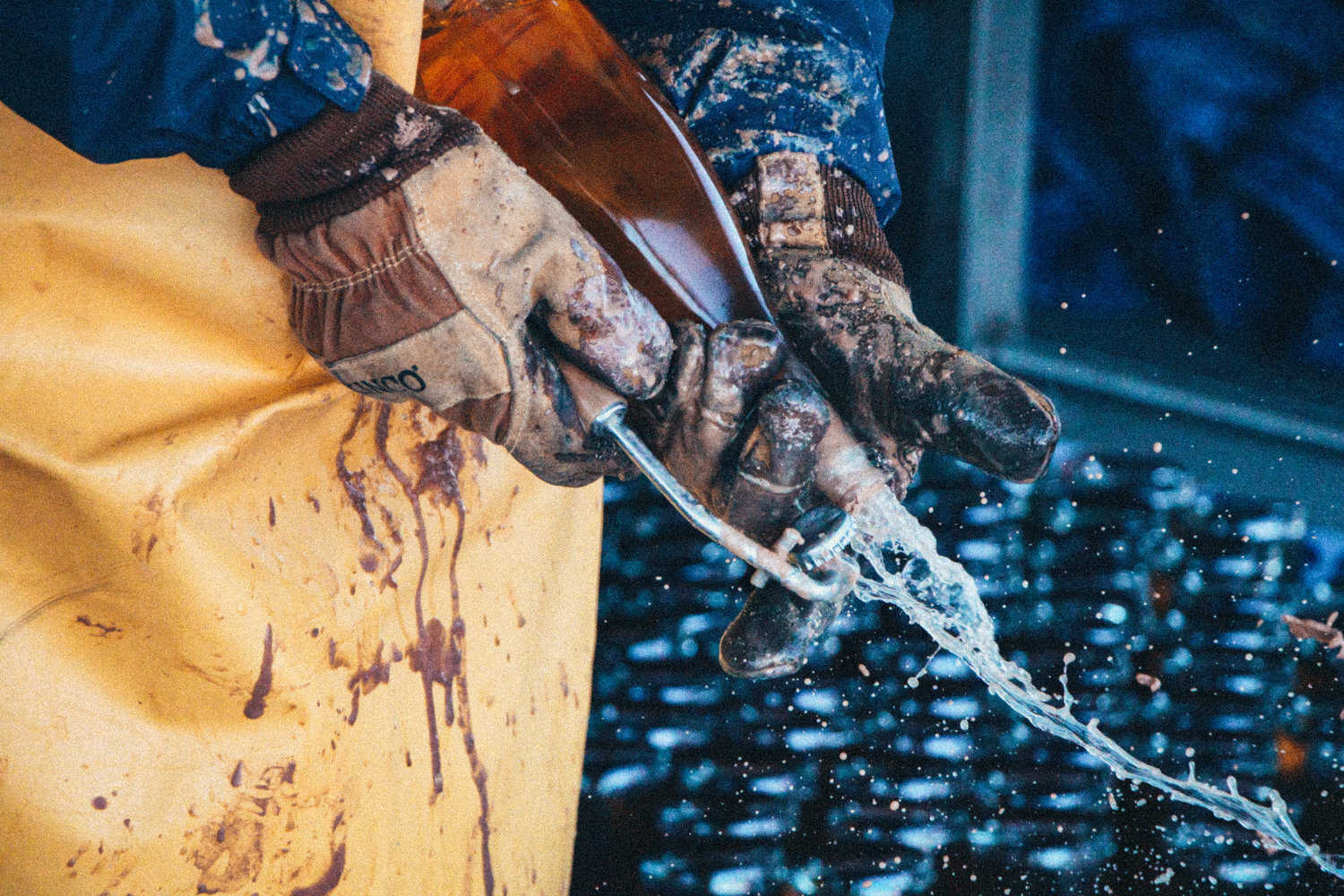MAKING PÉT-NAT: A BEAUTIFUL MESS
If you’re not obsessed with Pét-Nats yet, then you haven’t tried them. We’re obsessed and have been for years now and it seems as though the tastebuds of the everyday wine drinker has caught up.
So let’s start from the beginning: What is a Pét-Nat?
The term has its origins in French, a shortening of the phrase “pétillant naturel” which translates to “naturally bubbly.” Need we say more?
The process has a murky past, but is known to predate the “méthode Champenoise,” a process invented by Dom Pérignon centuries ago. This process ripped off what had been done in other parts of France for decades, notably in Limoux, and popularized it. Before Champagne was Champagne, winemakers were using the “méthode ancestral” to produce fun, fizzy wines.
How do we do it? Much like in the time of yore, we make our Pét-Nats with patience, a little hope, and a whole lot of mess. It all begins with an unfinished wine. Wine, as it ferments, will see a steady reduction in sugar as alcohol increases as the brew gives off carbon dioxide. Once the wine ferments down to about 1% residual sugar, we get to work filling bottles with this wine-in-progress. Suspended in the wine is yeast that’s still alive and kicking. Not done fighting the good fight, this yeast continues to ferment the wine in-bottle producing those glorious bubbles we all love.
Eventually, the fermentation winds down. All of the once active yeast now perishes and settles to the side of the bottle. This yeast is then riddled, a process where we shake each bottle mercilessly in order to consolidate the sediment into the neck of the bottle. These bottles are left to settle for a number of months before the most animated part of making Pét-Nat: disgorging.
The term itself sounds messy and a little visceral. Believe us: it is both of those things. Disgorging is the process of removing the sediment from the bottles of wine, all while losing as little product as possible.
Here’s how we do it: We make an ice bath and throw in a bunch of salt. This creates an exothermic reaction which allows the water to reach sub-freezing temperatures. We then stack the bottles in the solution upside-down. Frozen solid, the “plug” of sediment is ready for disgorging. We’ll grab the bottle, hold it downward at a 45º angle, use a specialized wine key to pop open the bottle, let that plug fly, and rotate the bottle upward simultaneously covering the mouth of the bottle to prevent as much loss as possible. Sound like a lot? It is. Here are some pictures to help give you a better picture:
The result? A delectable sparkling wine that’s just a little hazy and rustic. We sell our Pét-Nats under our Iapetus label, a line of a spontaneously fermented wines that never see filtration or fining. It’s the project of Ethan Joseph, our winemaker, who holds up the ideals of wines that represent place and are made with minimal intervention.





